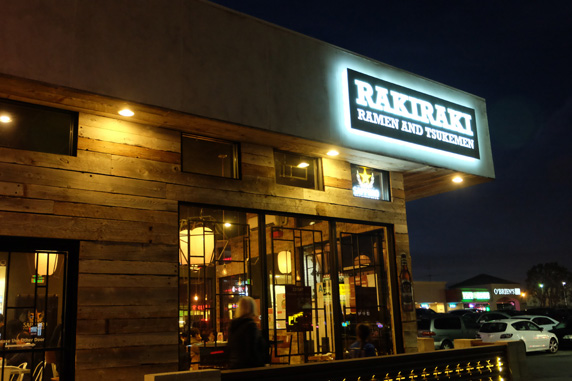
I became aware of Rakiraki Ramen through Anita Lau, a.k.a. @MadHungryWoman. Like me, she’s passionate about new and interesting venues for great food. Recently she visited San Diego and reaffirmed her passion for Rakiraki Ramen. Because I respect her so much, I made a mental note that this ramen house would be on my family’s list of “must do” items during a trip to San Diego.
Prior to our weekend getaway, I previewed their menu and saw a number of interesting items. Anita strongly recommended the karaage, or Japanese fried chicken. Seeing the entire menu, I warned my family to “go hungry”. Fortunately my family is used to my quirkiness; they don’t complain about sharing dishes.
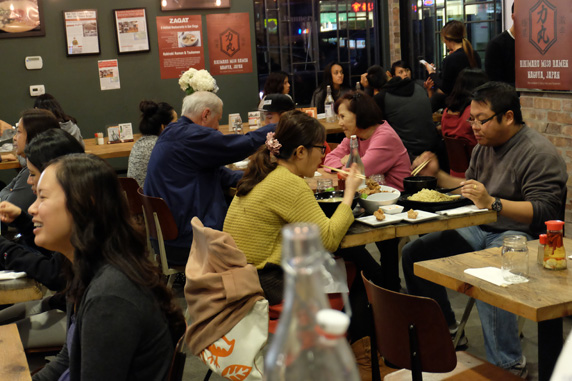
When we arrived, there were only a few open tables. We were seated at a table right next to the door and later found out that was not a desirable table because the chilly outdoor air gusted into us every time someone opened the door.
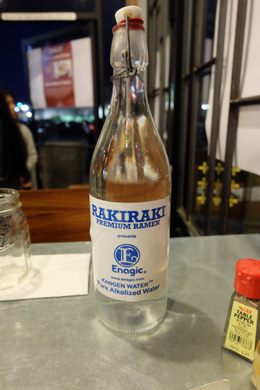
Each table is provided with a bottle of alkaline water which was a very pleasant surprise. Alkaline water acts as an antioxidant and helps balance the body’s pH.
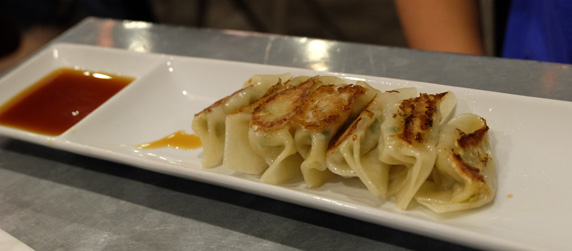
My daughter’s order of gyoza was the first plate delivered to our table. Gyoza is difficult to ruin and this Rakiraki’s gyoza was just fine. She gobbled it up quickly as she was starving.
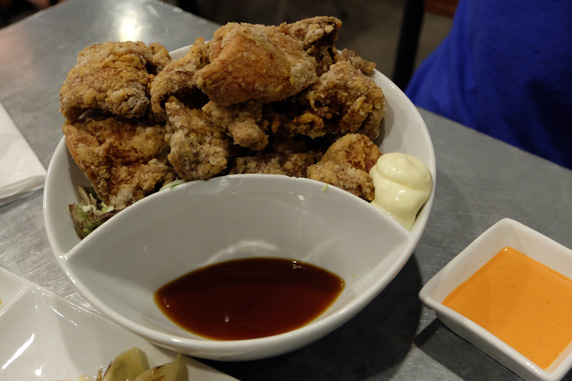
Karaage was the next dish served to us. It was served piping hot. Both my wife and I remarked on the taste of the exterior and found out that it consisted of potato starch. It was perfectly cooked as the outside was crisp and the inside was juicy.
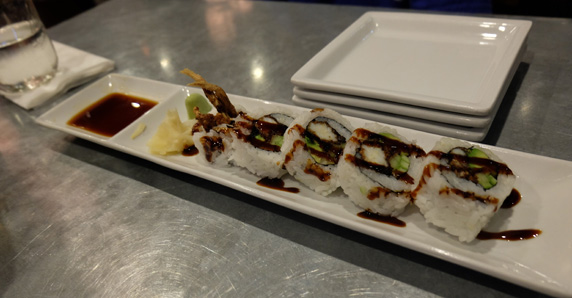
I ordered the soft shell crab roll because if shellfish is on the menu, I will usually order it. The crab roll was good; but I guess I was hoping for a more interesting presentation of the dish.
Each bowl of ramen is made to order and because they are exacting in the preparation, it doesn’t arrive to the table as quickly as you might expect. The broth is what makes a great bowl of ramen and it was interesting to learn their process. They use pure alkalized water which prevents unwanted acidity. They combine it with over 20 herbs, spices and organic bases imported from Japan. It then boils at a low heat for 21 hours.
The reason why each bowl of ramen takes time is because the broth is kept at room temperature. When they receive the order, the chef slowly simmers the broth to a temperature between 96 to 99 degrees to return it to optimal flavor. The noodles are boiled for exactly 46 seconds so that they are served al dente.
There are quite a few toppings available. Rakiraki serves them ‘aburi’ style where they flame blister the toppings to bring out a unique flavor.
I ordered the tonkatsu ramen with the prime XO underbelly chasiu and my wife ordered the premium spicy mild ramen. The main difference between the two is that the tonkatsu ramen has a pork based broth; the regular ramen has a chicken base. To accompany my bowl, I also ordered an unfiltered sake.
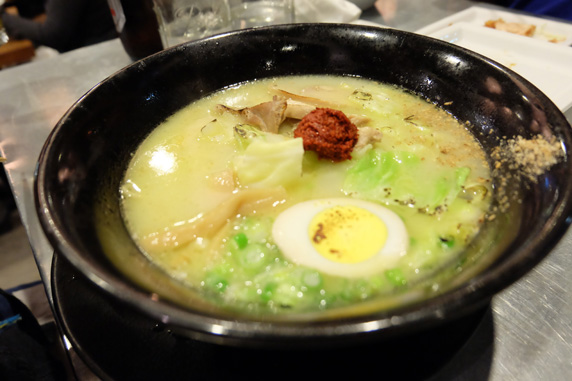
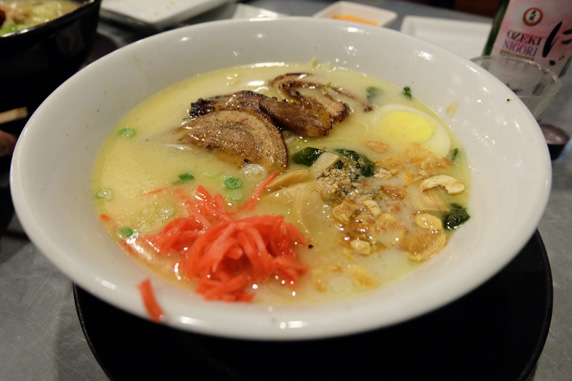
Both of us thoroughly enjoyed our ramen. My wife overestimated the word “spicy” as it did not provide the heat she desired and so she added some togarashi (Japanese red chili pepper). We both preferred the tonkatsu ramen over the premium ramen as the pork broth was more to our liking. My unfiltered sake paired quite nicely with this dish as it was more rustic vs. refined.
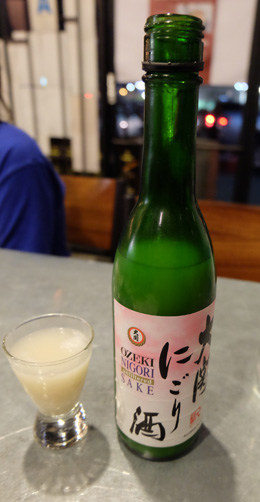
The next time I go, I will get a seat facing the kitchen. I think it will be fascinating to watch them prepare their dishes.
- Rakiraki Ramen and Tsukemen
- 4646 Convoy St. San Diego, CA 92111; (858) 573-2400
- Twitter: https://twitter.com/rakirakiramen
- Facebook: https://www.facebook.com/rakirakiramen
Great report Bryan as usual!
A very long way to go for ramen, but understandable. Thanks for trying both kinds of ramen. Should I ever go that far past the kids house in Oceanside I’ll definitely give it a try. I do enjoy good ramen!
Excellent descriptions of the flavors too! The ramen making reminded me of the movie The Ramen Girl with Brittany Murphy. Quirky but interesting look into how revered ramen making is back in the old country!
Thanks again!